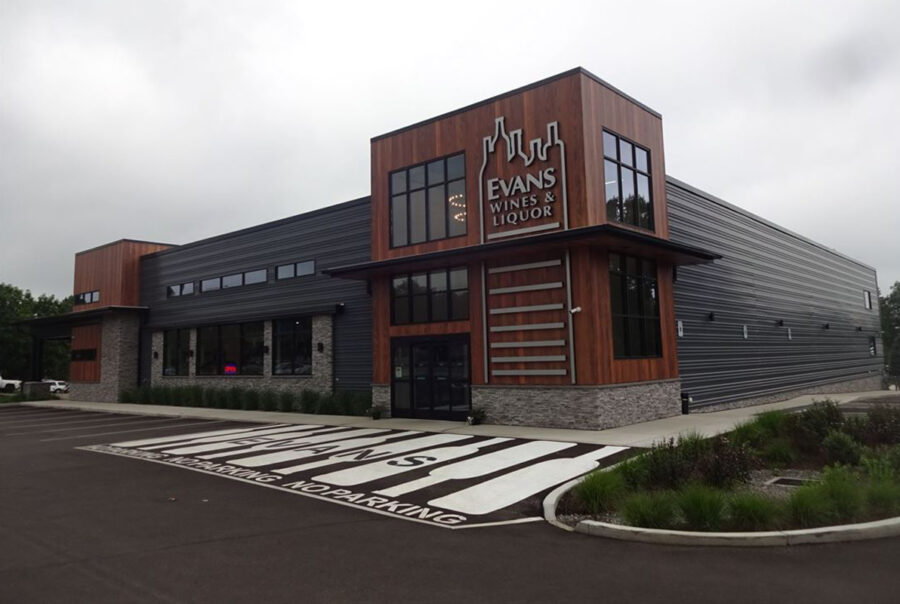Retail
This playbook is your go-to resource for understanding the coverage needs of retail businesses — from daily customer interactions to protections for inventory, equipment, and storefront operations.
The following playbook is intended to provide guidance on Merchants’ appetite and most desired risk characteristics. Your Merchants team is available to speak about the entirety of a risk that may have characteristics not exactly fitting our desirability.
We also encourage you to refer to Merchants Appetite Guide under the Resources/Tools menu of the Commercial Gateway in Merchants agent portal website for class-specific eligibility.
Description of Operations
Retail stores may sell a wide range of items, including appliances, beauty supplies, furniture, sporting goods, pet supplies, and toys. Some offer services such as appliance repair, home delivery and installation, and tailoring or alterations. Shopping carts may be provided for customers’ convenience.
Merchants Appetite
The following risk characteristics are intended to provide guidance on Merchants’ appetite. Your Merchants team is available to speak about the entirety of a risk that may have characteristics not exactly fitting our desirability. Refer to Merchants Appetite Guide under the Resources/Tools menu of the Commercial Gateway on merchantsgroup.com for class-specific eligibility.
Desirable Risks
- In business and under current ownership / management for 3 years or more
- Year-round operations
Ineligible
- Sales of directly imported goods
Exposures
Understand the key risks retailers face — and how customer traffic, inventory management, and service operations can impact coverage, claims, and business continuity.
Automobile Exposure
Automobile exposure may be limited to hired and nonowned for employees running errands. If delivery services are provided, anyone who drives an owned vehicle must have a valid license and acceptable MVR. Vehicles must be regularly maintained with records kept.
Crime Exposure
Crime exposures are from employee dishonesty and loss of money and securities either from holdup or safe burglary. Background checks should be conducted on all employees handling money. There must be a separation of duties between persons handling deposits and disbursements and reconciling bank statements. Money should be regularly collected from cash drawers and moved away from the collection area, preferably to a safe on premises. Bank drops should be made throughout the day to prevent a buildup of cash on the premises.
Inland Marine Exposure
Inland marine exposures are from accounts receivable if the store offers credit, computers to transact sales and monitor inventory, and valuable papers and records for vendors’ and customers’ information. Backup copies of all records, including computer files, should be made and stored off premises. There may be bailees exposure if the store accepts customers’ items for repair or goods in transit if the store delivers items to customers or transports stock between stores.
Premises Liability Exposure
Premises liability exposure is high due to the number of visitors to the store. To prevent slips and falls, there should be adequate aisle space. All goods should be kept on easily reached shelves so customers do not pull items down on themselves. Shattered glass from broken items must be cleaned up quickly. Flooring must be in good condition with no frayed or worn spots on carpet and no cracks or holes in flooring. Steps and uneven floor surfaces should be prominently marked. Sufficient exits must be provided and be well marked with backup lighting systems in case of power failure. Parking lots and sidewalks need to be in good repair with snow and ice removed, and generally level and free of exposure to slips and falls. There should be security in the parking lot equal to or better than the surrounding premises. If the business is open after dark, there should be adequate lighting and appropriate security for the area. Carts provided for customers’ use should be frequently retrieved from the parking lot to prevent damage to vehicles. There should be a disaster plan in place for unexpected emergencies. Personal injury exposures include allegations of discrimination, invasion of privacy in dressing rooms, and from apprehending and detaining shoplifters, which may result in claims of assault and battery, false arrest, or detention, unauthorized or intrusive searches, or wrongful ejection from the premises. Shoplifting procedures must be fully understood and utilized by all employees.
Property Exposure
Property exposure is low as ignition sources are limited to electrical wiring, heating and cooling systems. These should be well maintained and meet current codes for the occupancy. The stock may be combustible and is moderately susceptible to damage by fire, smoke, and water, but is generally not high value. Any flammables used in repairs should be properly stored, separated and controlled. Electronics may be targeted by thieves. Appropriate security measures should be in place including physical barriers to prevent entrance to the premises after hours and an alarm system that reports directly to a central station or the police department. Business interruption can be high as the store may do the bulk of its business during the holiday season. Backup facilities may not be readily available.
Workers Compensation Exposure
Workers compensation exposures are moderate due to employees standing for long hours, the use of computers, and restocking which requires lifting and placing items on shelves. Continual standing can result in musculoskeletal disorders of the back, legs, or feet. Trips, slips, and falls are common. When work is done on computers, employees are exposed to eyestrain, neck strain, and repetitive motion injuries including carpal tunnel syndrome. Lifting can cause back injury, hernias, sprains, and strains. Employees should be provided with safety equipment, trained on proper handling techniques, and have conveying devices available to assist with heavy lifting. Shelves should be easily accessible for storage. Stepladders should be available. Housekeeping in storage areas, especially during peak times, is vital in preventing trips and falls. Cleaning workers can develop respiratory ailments or contact dermatitis from working with chemicals. In any retail business, hold-ups may occur. Employees should be trained to respond in a prescribed manner.
Risk-Smart Retail Businesses
Click each photo to see what makes it best-in-class — and how these features help minimize risk and reduce exposures in retail store environments.
Red Flags in the Field
Click each photo to learn what’s not-so-great — and how these conditions can increase risk, raise exposures, or lead to costly claims in retail operations.
Automatic Coverages
These built-in coverages come standard with our retail policies, offering added protection for inventory, income, equipment, and more — all at no additional cost.
Not all coverages may be available in all states and limits may vary by state. For specific details, please refer to the appropriate Merchants form, which can be found in the Company Forms Library on Merchants website.
Accounts Receivable
Coverage for accounts receivable is provided at a limit of $25,000 on premises and $10,000 off premises. The on premises limit may be increased. This coverage is subject to the property deductible in the policy. This coverage protects against loss resulting from an inability to collect accounts receivable due to loss, damage, or destruction of books or records of accounts. The on premises limit may be increased.
Additional Insured by Contract, Agreement or Permit
Provides coverage to any person or organization when the named insured has agreed in a contract or agreement to name that person or organization as an insured on their policy. Automatically included on a blanket basis. Various other optional additional insured endorsements are available on a scheduled or blanket basis.
Annual Aggregate Limit Per Location
This policy conditions amends the General Aggregate Limit to apply separately to each location owned by or rented to the insured.
Damage to Premises Rented to You (Fire Legal Liability)
Business Liability coverage for damage because of property damage to a premises while rented to the insured or temporarily occupied by the insured with permission of the owner is provided at a limit of $300,000 unless a higher limit of insurance is shown in the policy declarations.
Debris Removal
Coverage applies for expense to remove debris of covered property and other debris that is on the described premises, when such debris is caused by or results from a covered cause of loss that occurs during the policy period. The expenses are only paid if they are reported within 180 days of the loss or damage. The coverage limit is 25% of the direct physical loss plus $25,000.
Employee Dishonesty
Coverage is included for loss or damage to Business Personal Property and Money and Securities resulting from dishonest acts committed by any of the insured’s employee. Coverage limit is $25,000 subject to a $250 deductible. Higher limits may be purchased.
Forgery or Alteration
$10,000 Provides coverage when someone other than the employee or owner forges a signature on a check or other monetary instrument in order to obtain money that belongs to the insured. Forgery by an employee is covered in the Employee Dishonesty coverage. Higher limits are available.
Identity Recovery
In the event of a covered identify theft, coverage for case management service and expense reimbursement up to an annual aggregate limit of $15,000 is provided. The identity theft must involve a insured under the policy, must be first discovered during the policy period and must be reported within 60 days after it is first discovered.
Lock & Key Replacement
Coverage applies for the cost to repair or replace locks or keys at the described premises due to theft of keys from your premises. The limit for this coverage is $500 subject to a per occurrence deductible of $50.A limit of $500 applies to customers keys.
Money & Securities
Coverage for money, securities and credit card slips is included at a limit of $25,000 inside the premises and $5,000 outside the premises subject to a $250 deductible. Higher limits may be purchased. The loss of money and securities must result directly from theft, disappearance or destruction. Additional limits for inside the premises coverage are available.
Newly Acquired or Constructed Property
If the policy covers a building, that coverage can be extended to apply to new buildings while being built on the described premises and buildings the insured acquires at a premises other than the described premises that are intended for a similar use as the building described in the policy or to be used as a warehouse. If the policy covers business personal property that coverage may be extended to such property the insured acquires at any location acquired or at a newly constructed building. This extension does not apply to personal property temporarily acquired in the course of installing or performing work on such property. Limit provided is $500,000 for building and $250,000 for business personal property.
Pollutant Clean Up and Removal
Coverage is provided to pay the insured’s expense to extract pollutants from land or water at the described premises if the discharge, dispersal, seepage, migration, release or escape of the pollutants is caused by or results from a Covered Cause of Loss that occurs during the policy period. The expenses will only be paid if they are reported in writing within 180 days from the date on which the loss occurs. The most that will be paid is $25,000 for all expenses arising out of a loss occurring during each separate 12 month period of the policy.
Utility Service - Direct Damage & Time Element
Coverage is provided for loss or damage to covered property caused by the interruption of service to the described premises. The interruption of utility services must result from direct physical loss or damage by a covered cause of loss to the insured property. Utility services include water supply, communication supply and power supply. The limit for direct damage is $25,000 and $25,000 for loss of business income or extra expense. Higher limits are available.
Valuable Papers
Coverage applies to direct physical loss o damage to valuable papers and records owned by the insured or that are in the insured’s care, custody or control caused by or resulting from a covered cause of loss. This coverage includes the cost to research, replace or restore the lost information on valuable papers and records for which duplicates do not exist. The limit for this coverage is $25,000 on premises and $10,000 off premises. The on premises limit may be increased.
Voluntary Property Damage
Voluntary Property Damage coverage is provided for unintentional property damage to the property of others caused by the insured or while the property is in the insured’s possession and the damage is arising out of the operations described in the policy. The coverage limit is $5,000 per occurrence/$25,000 aggregate with a $500 per claim deductible.
Water Back-Up and Sump Overflow
Coverage is provided for direct damage or loss to covered property caused by or resulting from water which backs up through or overflows from a sump, sump pump or related equipment. The cost of repairing or replacing the sump pump or its related equipment is not covered if the loss is caused by a mechanical breakdown. Coverage does not apply if the insured fails to keep a sump pump in proper working condition or fails to perform routine maintenance or repair necessary to keep a sewer or drain free of obstructions or the sump pump failure is caused by or results from failure of power unless the policy is amended to cover power failure. A limit of $25,000 applies.
Helpful Resources
Navigate to “Merchants On-Demand” from the homepage of your Merchants agent portal website to access flyers for your reference, as well as flyers you can distribute to clients.











